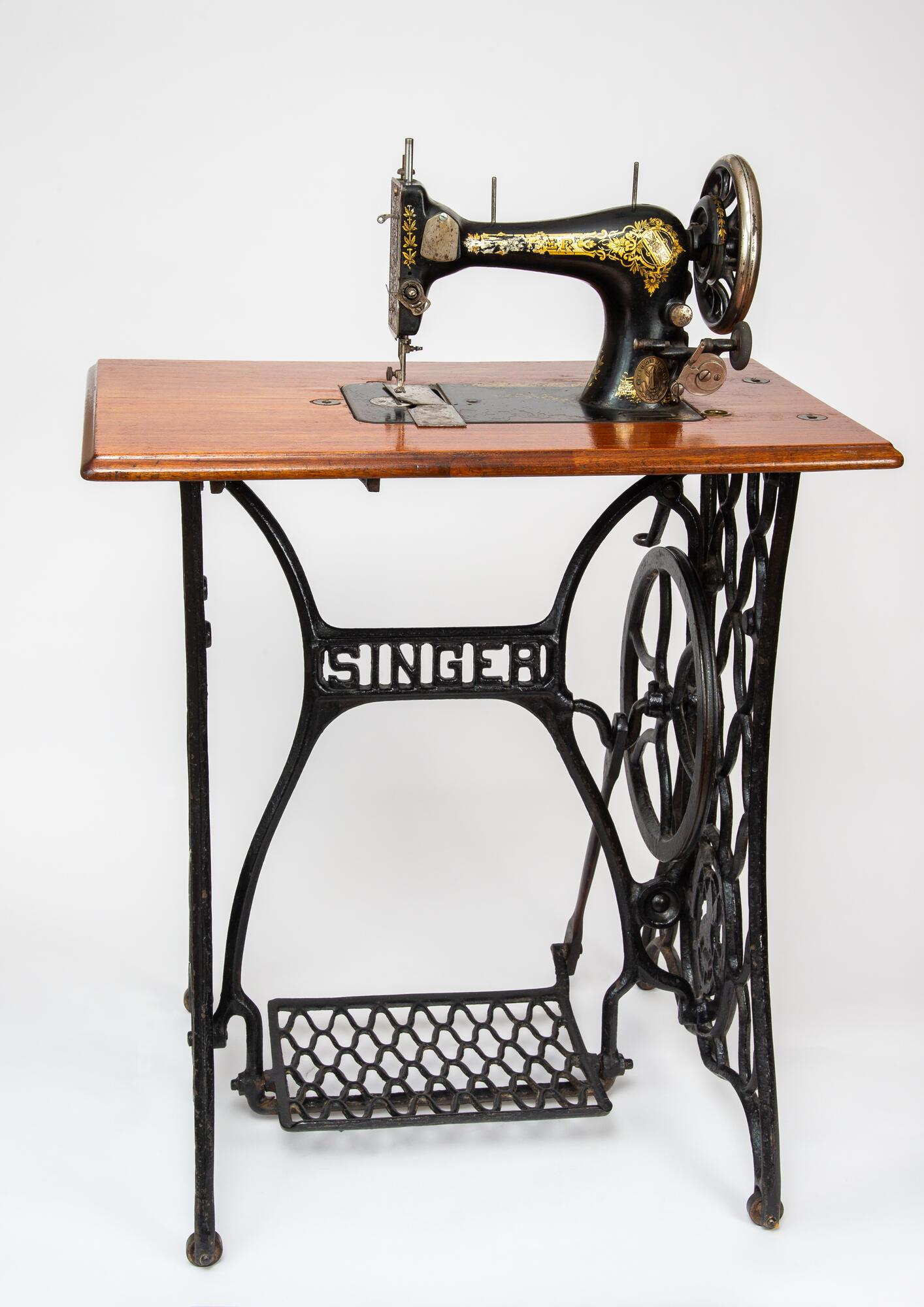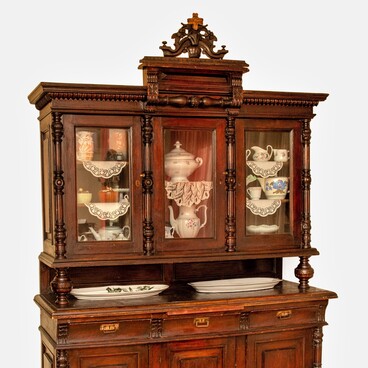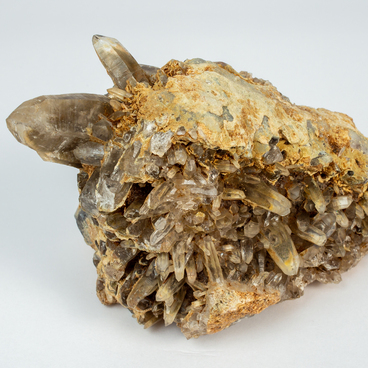The sewing machine belonged to a local resident Valentina Aksenova. The relic was kept in her family and bequeathed, the owner received it from her mother, and later donated it to the museum collection.
The device was manufactured by ‘Singer’, a well-known manufacturer of sewing machines in Russia and in the world. The company was founded by Isaac Singer, an American inventor and entrepreneur. In 1851, he received a patent for the first sewing machine.
The first sewing machine was expensive for that time and cost $ 100. Demand for the product was low: at home, women sewed with a needle and thread, and workshop owners hired seamstresses — their labor was cheaper than buying a new device.
Then Isaac Singer organized an advertising campaign to convince housewives that they needed a new sewing machine. The entrepreneur began to place advertisements on theater programs, as well as in churches — the descriptions of the device were handed out to parishioners during sermons along with religious reading material.
Sewing machines were shown at fairs. The company’s employees told the housewives who were passing by about the benefits of the new device. The campaign was successful: “Singer” soon became a popular and prestigious brand, and a sewing machine was considered a sign of wealth.
At the peak of its popularity, in the 1860s, “Singer” entered the Russian market. It was represented by a German entrepreneur Georg Neidlinger, who had a warehouse in Hamburg and 65 sales centers in Russia.
In 1902, “Singer” opened its own plant in Podolsk. The logo on sewing machines was russified: from “Singer” it turned into “Зингеръ”. Later, the inscription “Supplier of the Court of His Imperial Majesty” was added — this inscription was considered a sign of high quality.
Sewing machines manufactured at the Podolsk factory were sold not only in Russia, but also exported to other countries, including Turkey, Persia, Japan and China.
By the beginning of World War I in 1914, the plant produced 600 million sewing machines per year. They were sold in 3,000 brand stores across the country and were also delivered by mail.
In 1918, the Podolsk factory was nationalized — the Bolsheviks began to manage it. They began to produce a sewing machine under the brand name “Gosshveimashina”, and in 1931 it was renamed into “Podolsk Mechanical Plant”. However, the machine’s design was fully copied from the ‘Singer’ sewing machine.
The device was manufactured by ‘Singer’, a well-known manufacturer of sewing machines in Russia and in the world. The company was founded by Isaac Singer, an American inventor and entrepreneur. In 1851, he received a patent for the first sewing machine.
The first sewing machine was expensive for that time and cost $ 100. Demand for the product was low: at home, women sewed with a needle and thread, and workshop owners hired seamstresses — their labor was cheaper than buying a new device.
Then Isaac Singer organized an advertising campaign to convince housewives that they needed a new sewing machine. The entrepreneur began to place advertisements on theater programs, as well as in churches — the descriptions of the device were handed out to parishioners during sermons along with religious reading material.
Sewing machines were shown at fairs. The company’s employees told the housewives who were passing by about the benefits of the new device. The campaign was successful: “Singer” soon became a popular and prestigious brand, and a sewing machine was considered a sign of wealth.
At the peak of its popularity, in the 1860s, “Singer” entered the Russian market. It was represented by a German entrepreneur Georg Neidlinger, who had a warehouse in Hamburg and 65 sales centers in Russia.
In 1902, “Singer” opened its own plant in Podolsk. The logo on sewing machines was russified: from “Singer” it turned into “Зингеръ”. Later, the inscription “Supplier of the Court of His Imperial Majesty” was added — this inscription was considered a sign of high quality.
Sewing machines manufactured at the Podolsk factory were sold not only in Russia, but also exported to other countries, including Turkey, Persia, Japan and China.
By the beginning of World War I in 1914, the plant produced 600 million sewing machines per year. They were sold in 3,000 brand stores across the country and were also delivered by mail.
In 1918, the Podolsk factory was nationalized — the Bolsheviks began to manage it. They began to produce a sewing machine under the brand name “Gosshveimashina”, and in 1931 it was renamed into “Podolsk Mechanical Plant”. However, the machine’s design was fully copied from the ‘Singer’ sewing machine.



